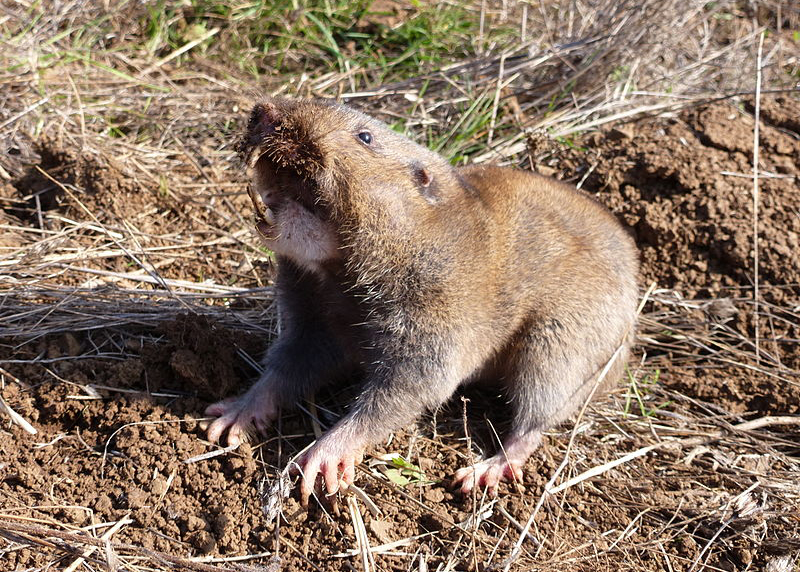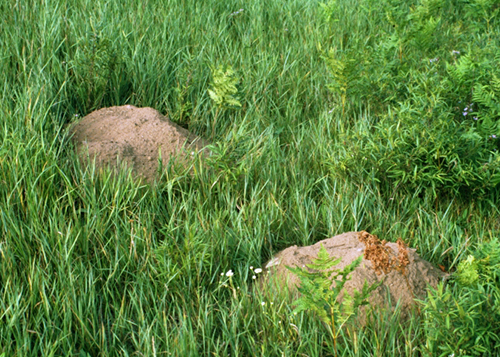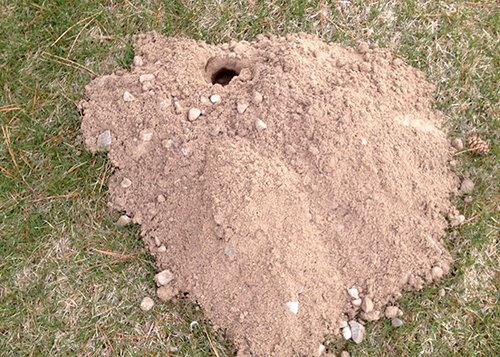Integrated Pest Management
Pocket Gophers
Geomyidae
Identification
- 6 – 13 inches long
- light brown to brownish-black fur
- short, hairless tails
- incisor teeth always visible in front of mouth
Nesting Habits
- construct underground burrows and leave fan-shaped mounds of excavated soil at the surface with a soil plug in the middle of the fan
- active year round
- usually only one individual per tunnel system except during mating season or when females have offspring
Diet
- prefer dandelion roots, alfalfa, grasses, shrubs, roots and trees
Significance
- damage lawns, gardens, sports and agricultural fields
- damage underground utility cables and irrigation pipes
- harm trees by stripping bark and chewing on roots
IPM Recommendations
- Trap pocket gophers using two-pronged pincer traps in lateral burrows and closed box-style traps in main burrows.
- Surround trees and shrubs with 3/8-inch hardware cloth.
- Consider flood irrigation to help control gopher populations, if applicable.
- Bait larger populations by placing bait directly into burrows using a probe applicator.
- Monitor problem areas to assure trapping and baiting were successful and to quickly control new populations.




